Understanding fractions Geometry Worksheets for Ages 8-9
23 filtered results
-
From - To
Unlock the world of fractions with our "Understanding Fractions Geometry Worksheets" tailored for ages 8-9. Designed expertly to blend fun and learning, these engaging worksheets help young learners grasp the essentials of fractions through geometric shapes, clear visuals, and practical exercises. From comparing fractions to understanding parts of a whole, each worksheet builds confidence and enhances mathematical thinking. Perfect for classroom or at-home practice, these resources are the ideal companion for students beginning their fractions journey. Set your child on the path to math success with our thoughtfully crafted, educational, and interactive worksheets.
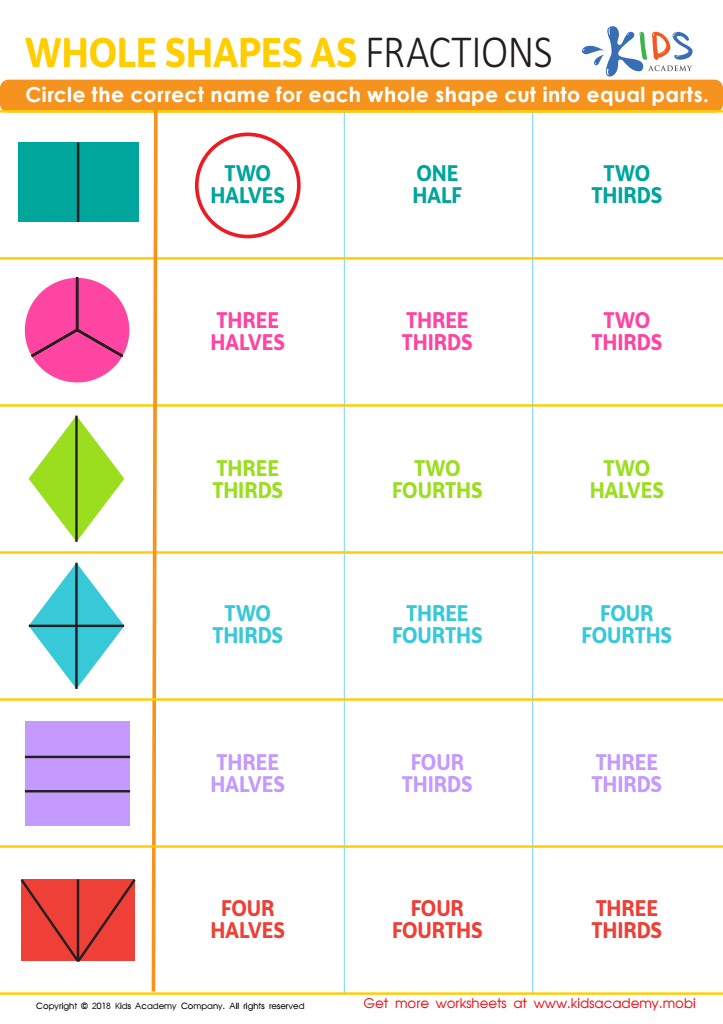

Whole Shapes as Fractions Worksheet
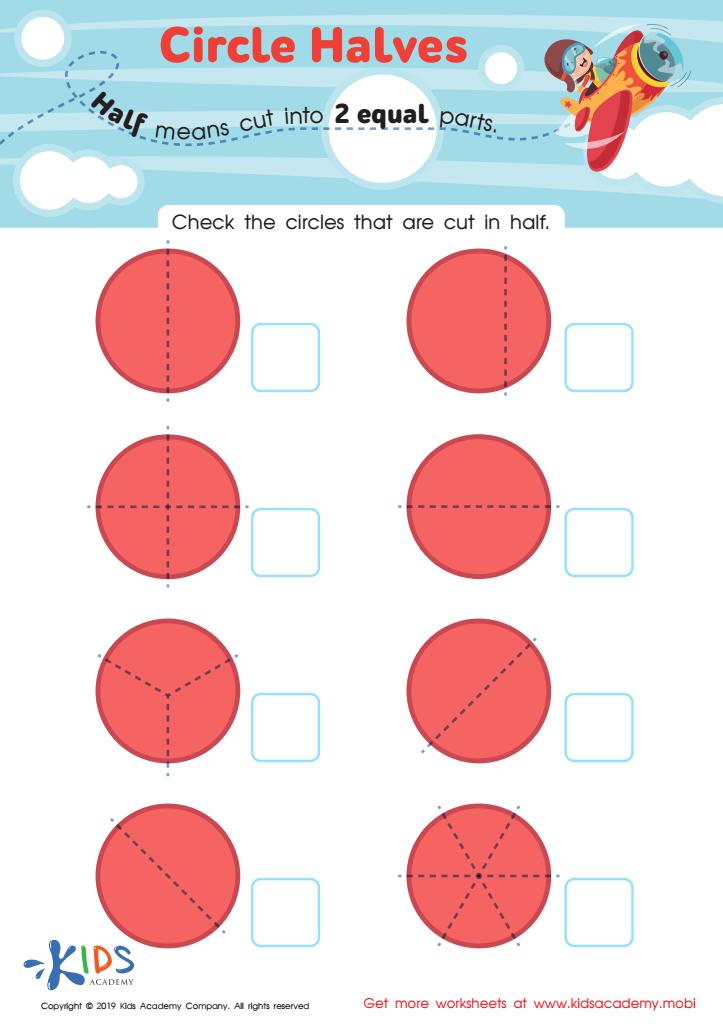

Circle Halves Worksheet
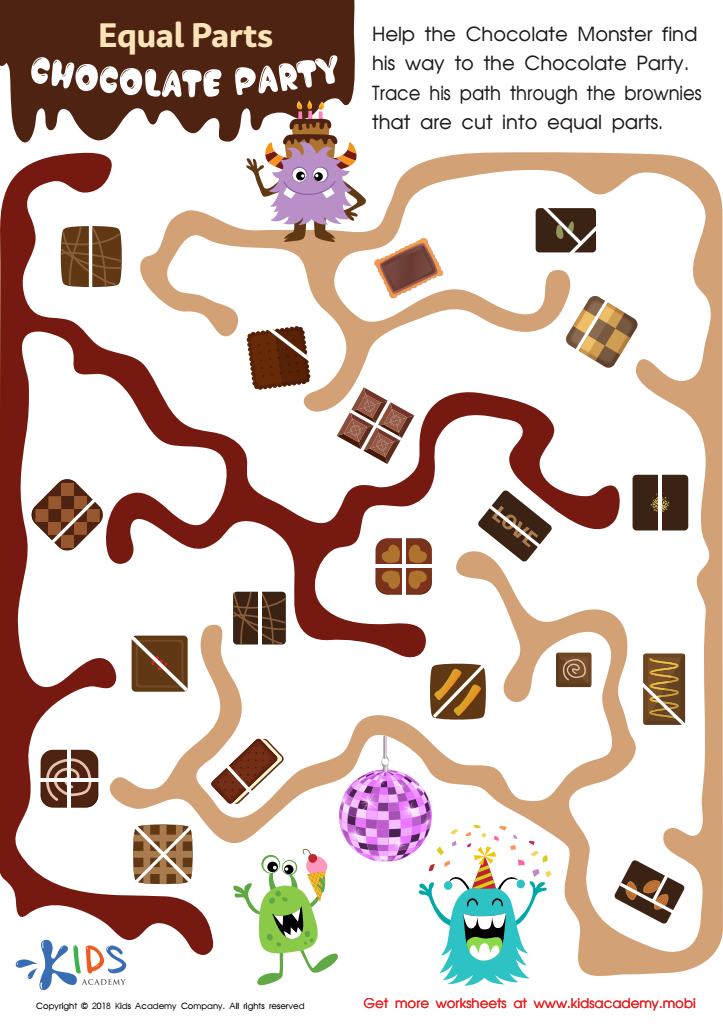

Equal Parts: Chocolate Party Worksheet
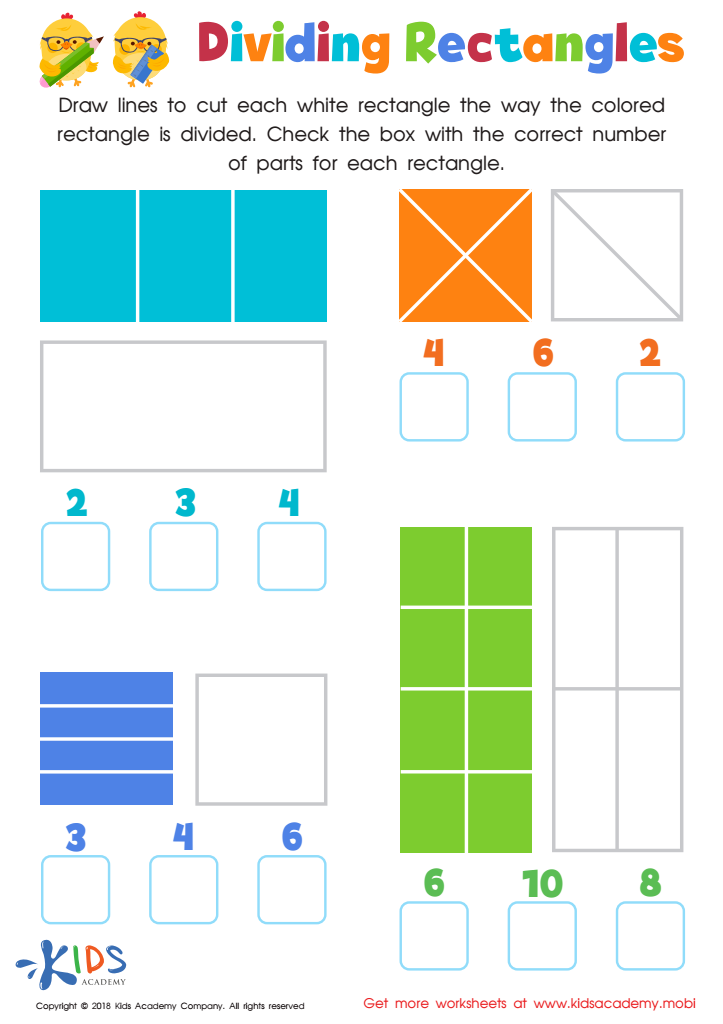

Dividing Rectangles Worksheet


Halves and Wholes on the Clock Worksheet
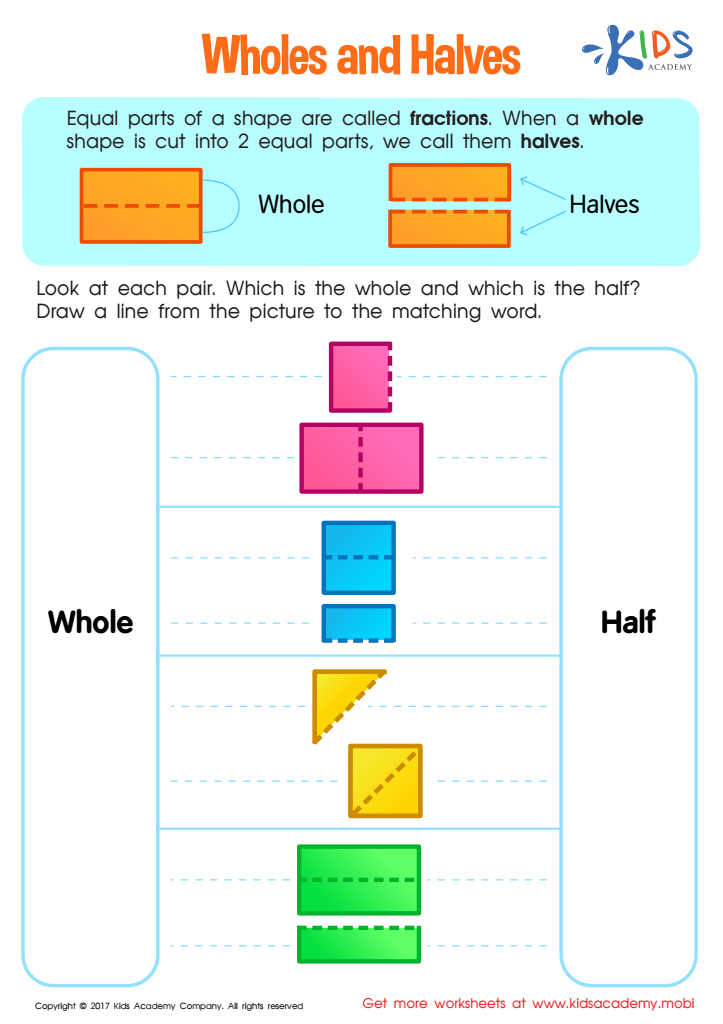

Wholes and Halves Worksheet
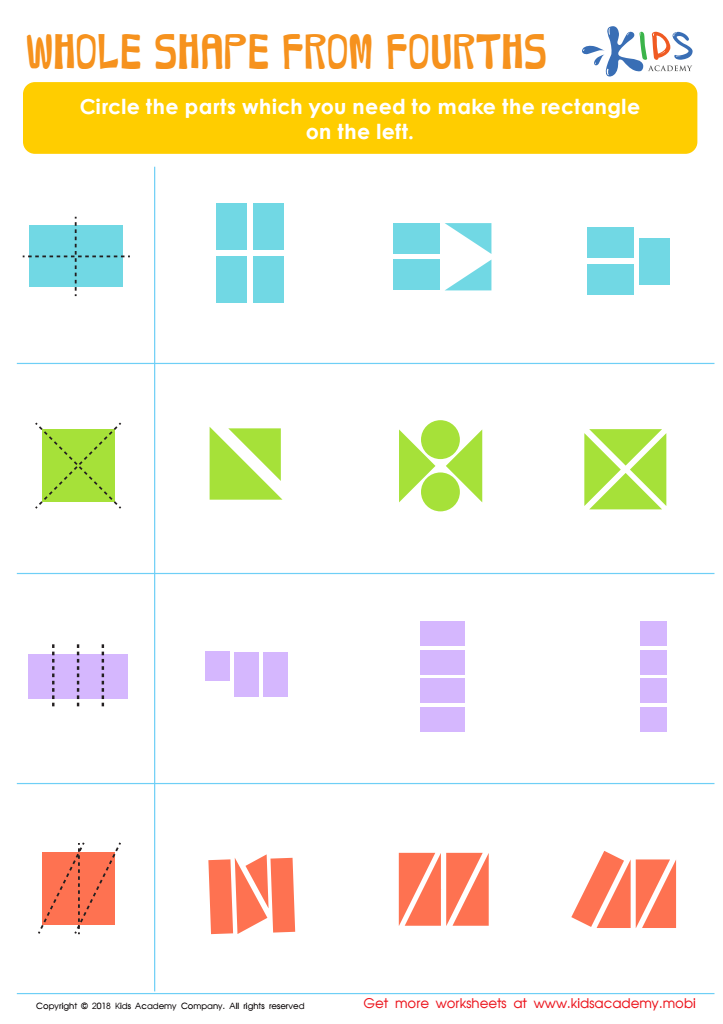

Whole Shape from Fourths Worksheet
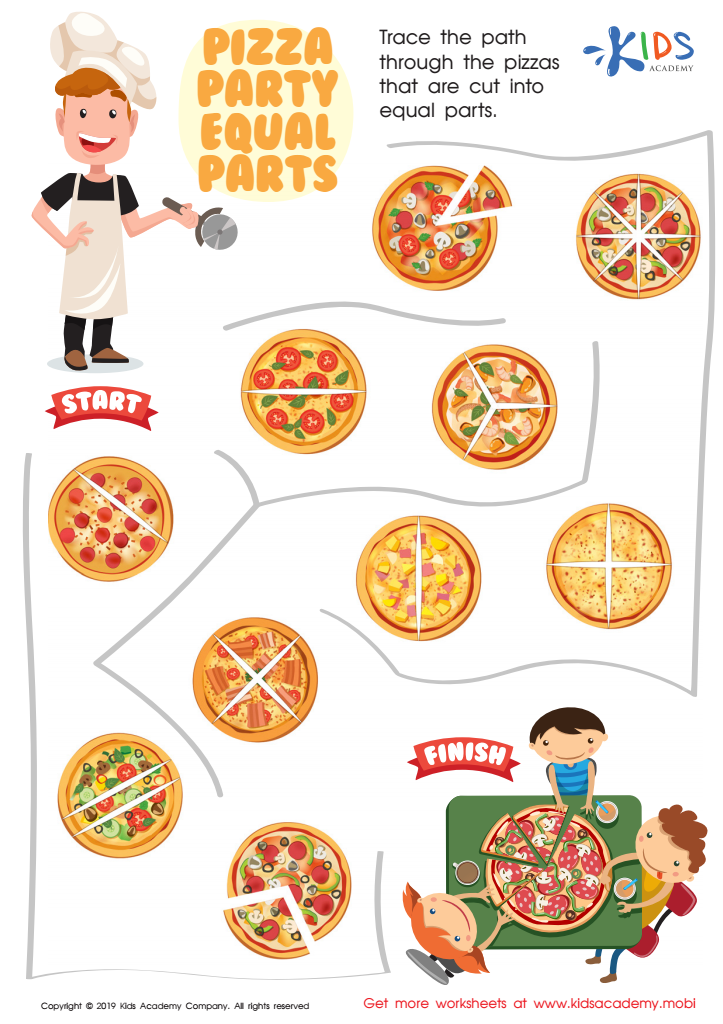

Pizza Party Equal Parts Worksheet
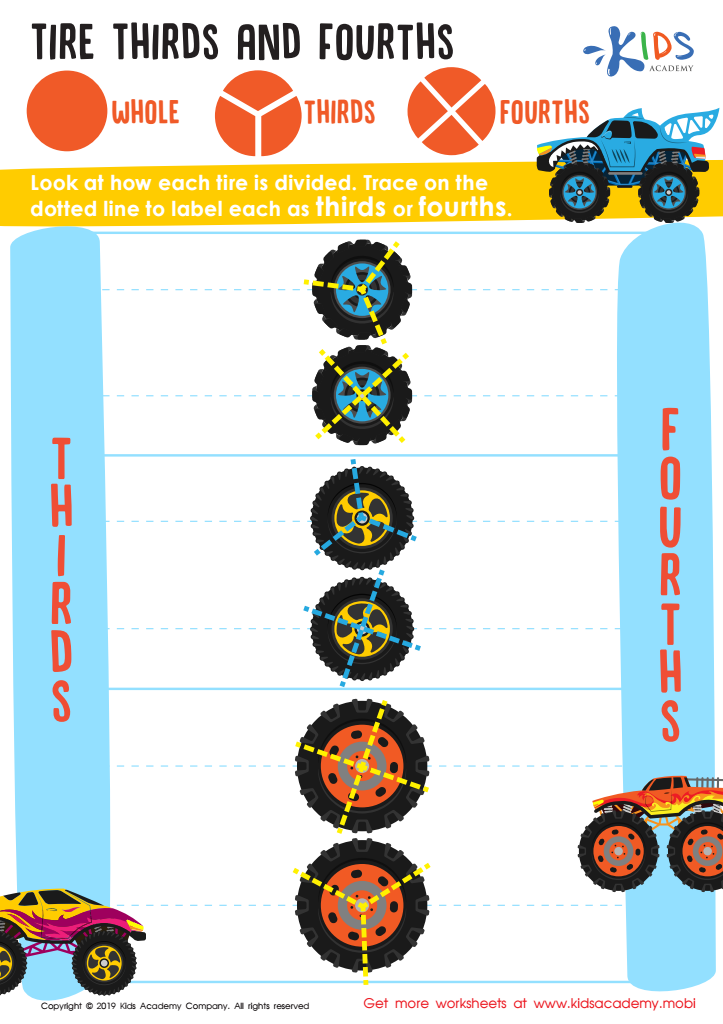

Tire Thirds and Fourths Worksheet
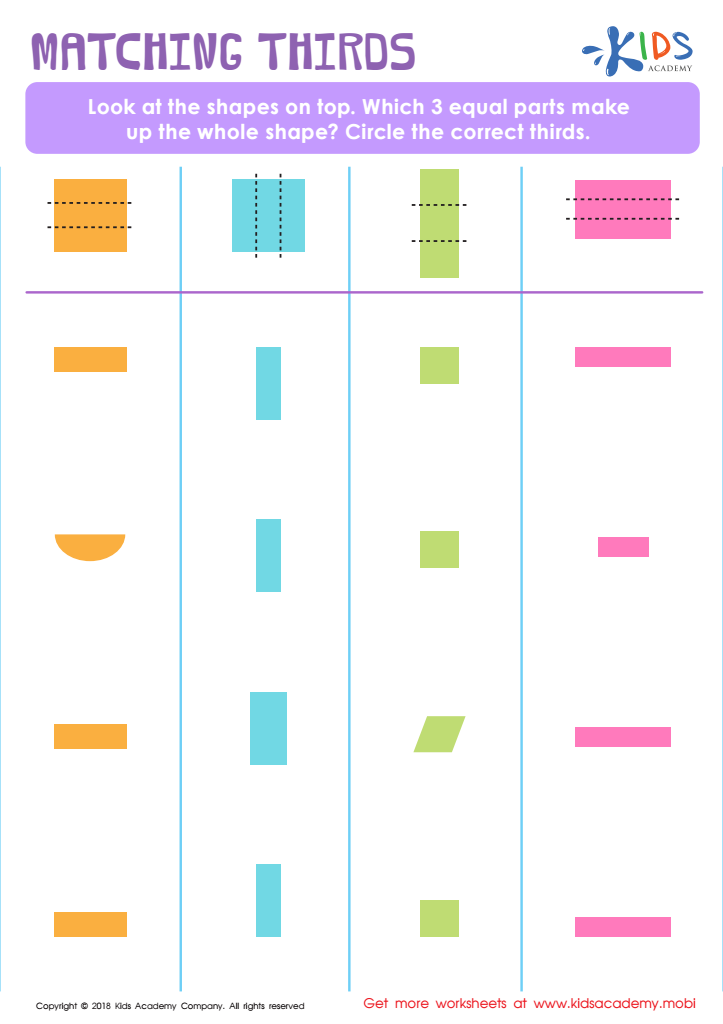

Matching Thirds Worksheet
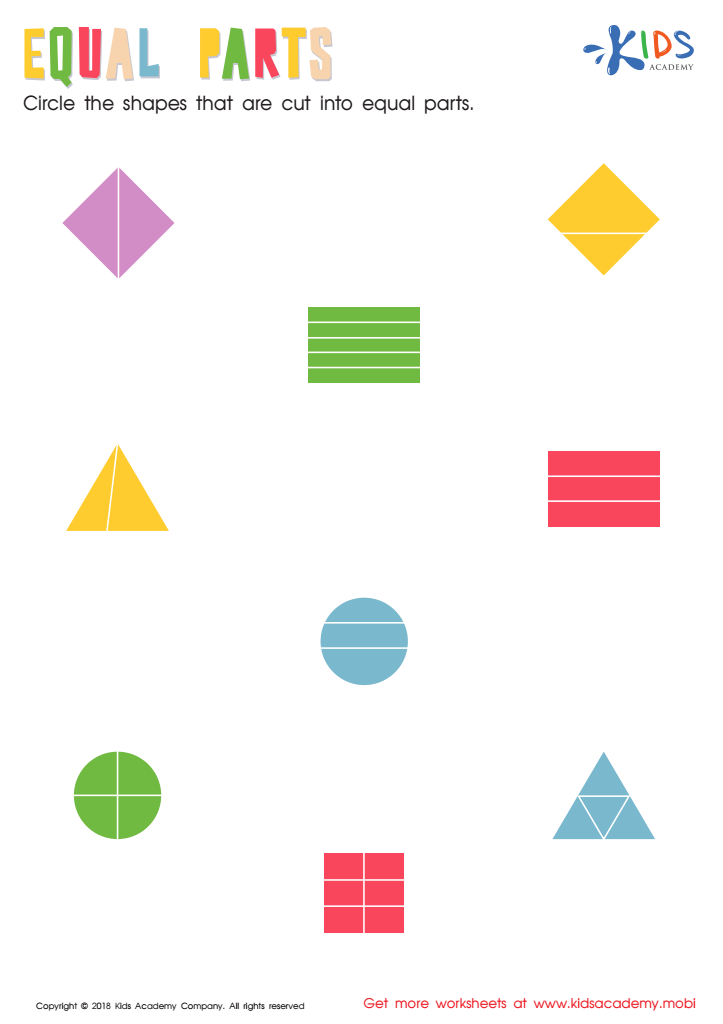

Equal Parts: Shapes Worksheet
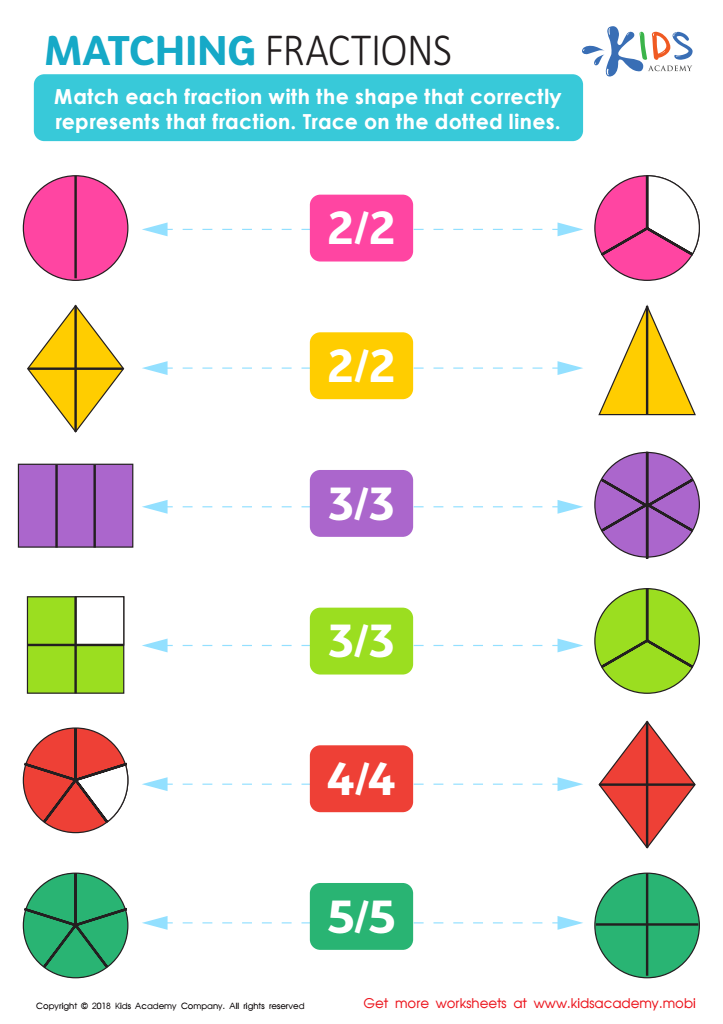

Matching Fractions Worksheet
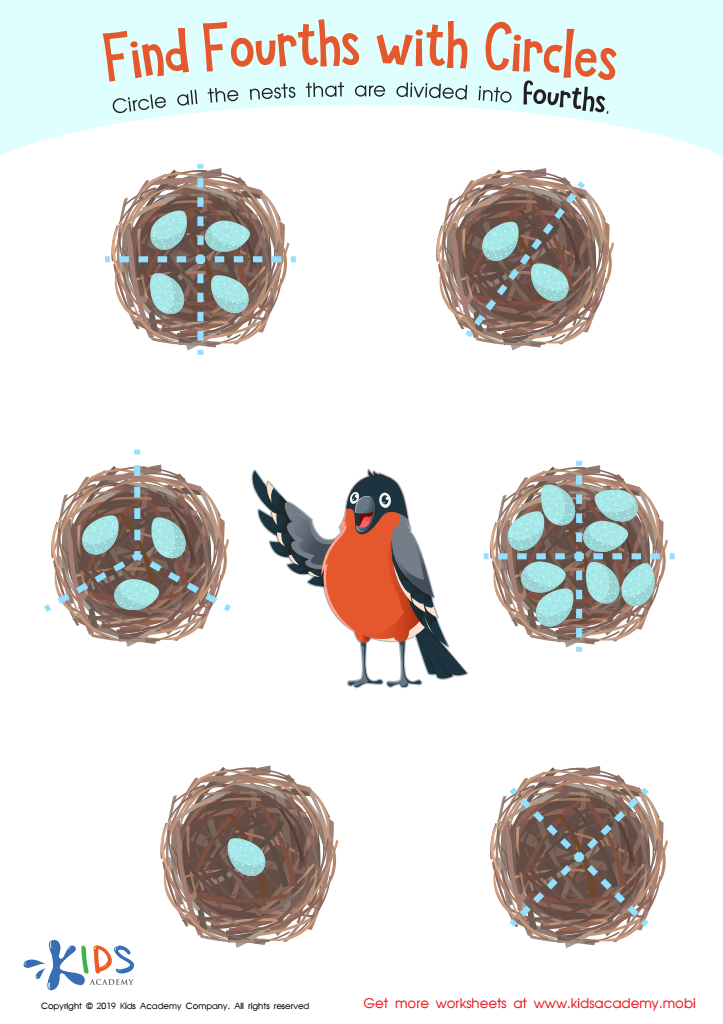

Find Fourths Circles Worksheet


Match Fractions Worksheet
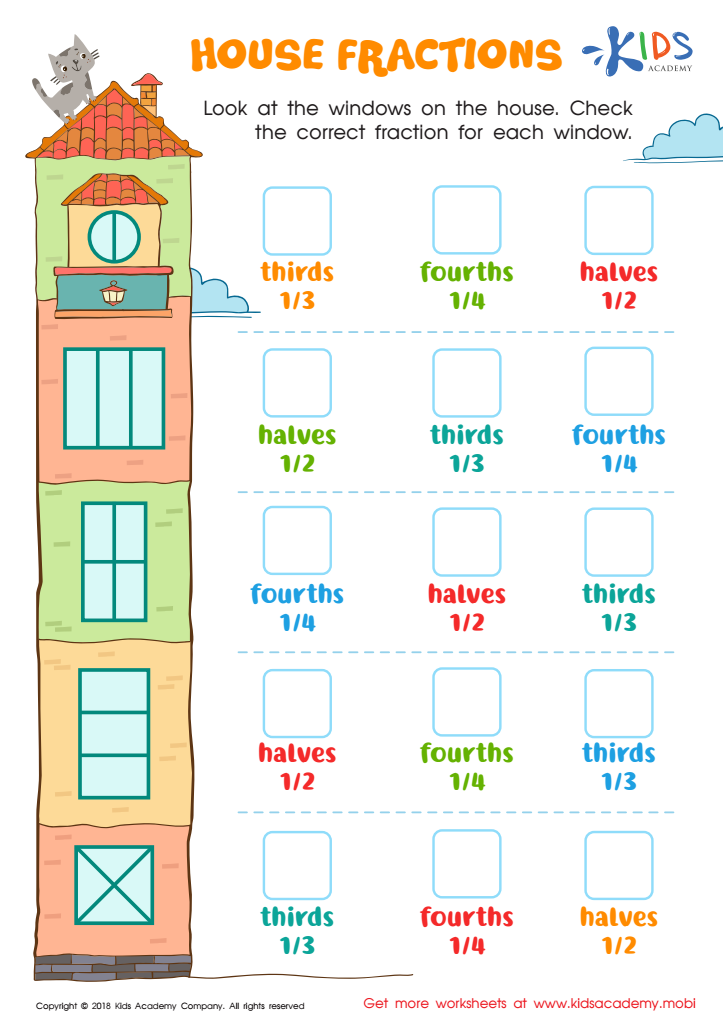

House Fractions Worksheet
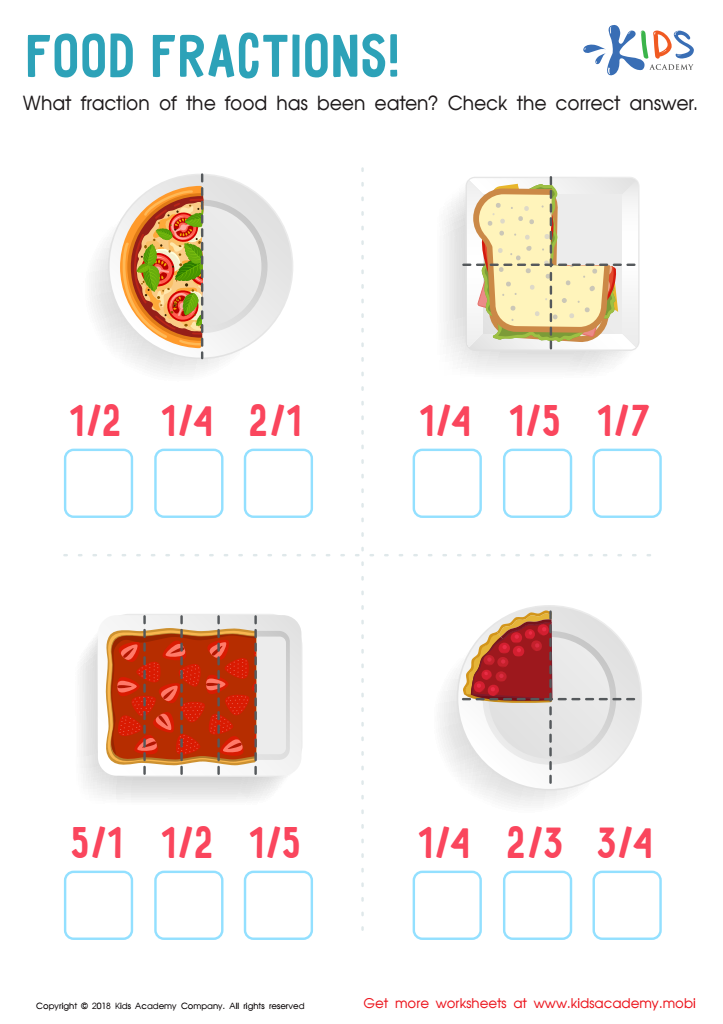

Food Fractions Worksheet
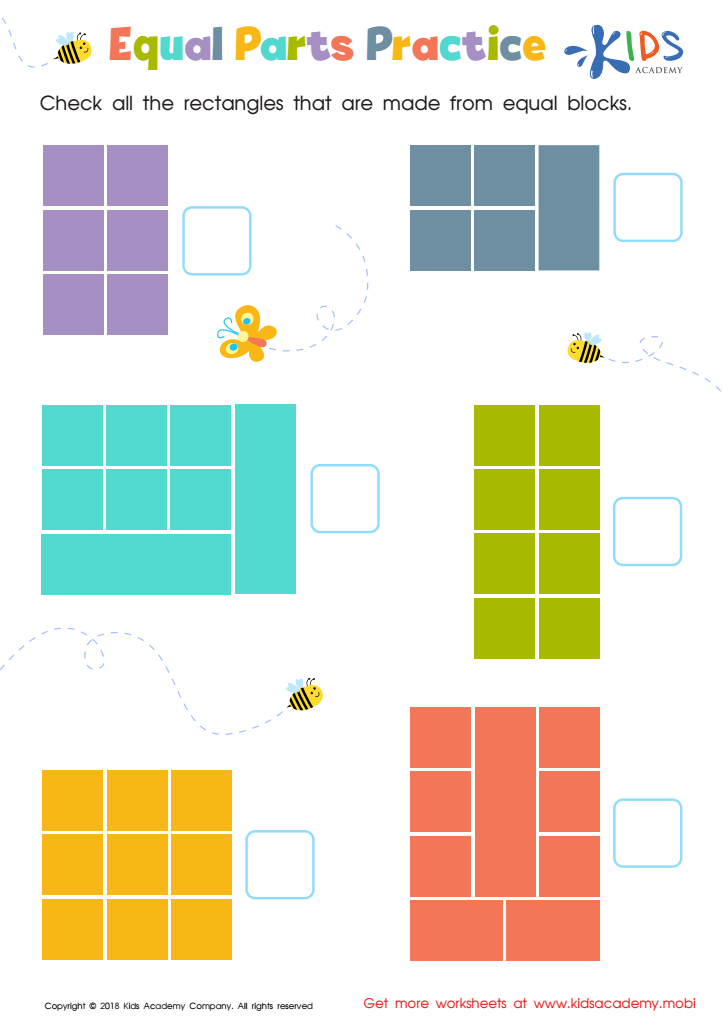

Equal Parts Practice Worksheet
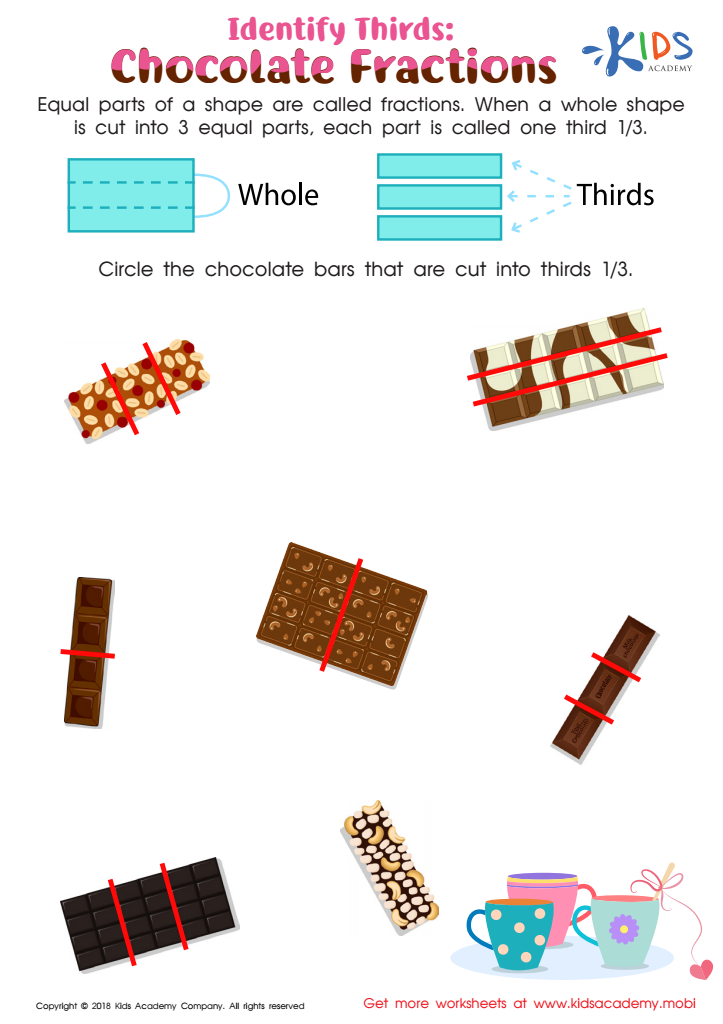

Identify Thirds: Chocolate Fractions Worksheet
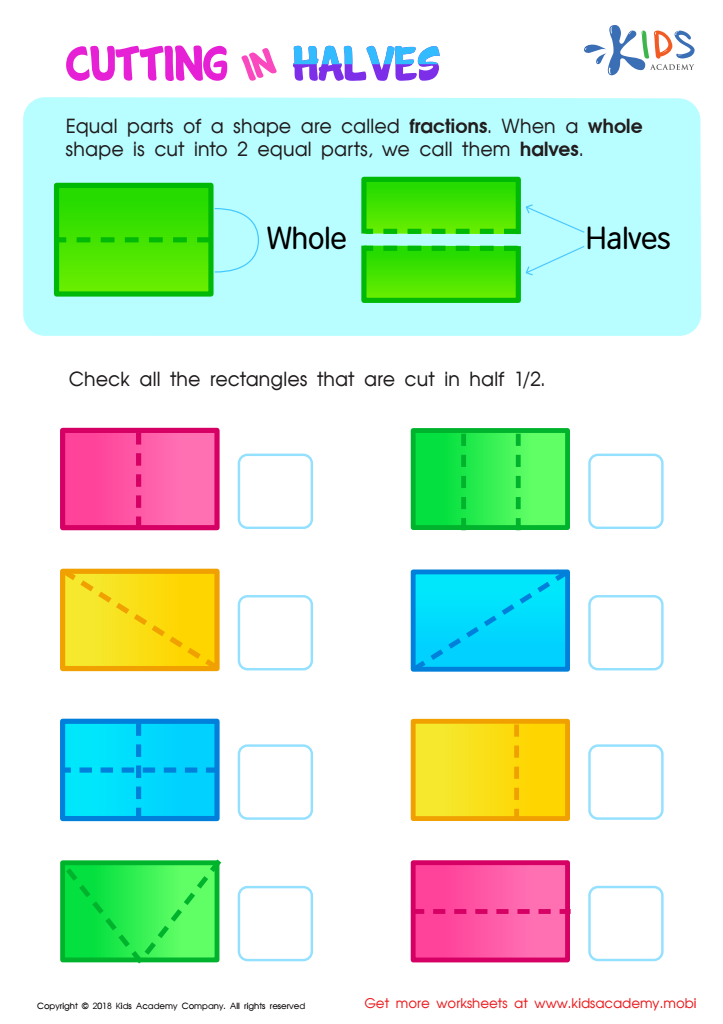

Cutting in Halves Worksheet
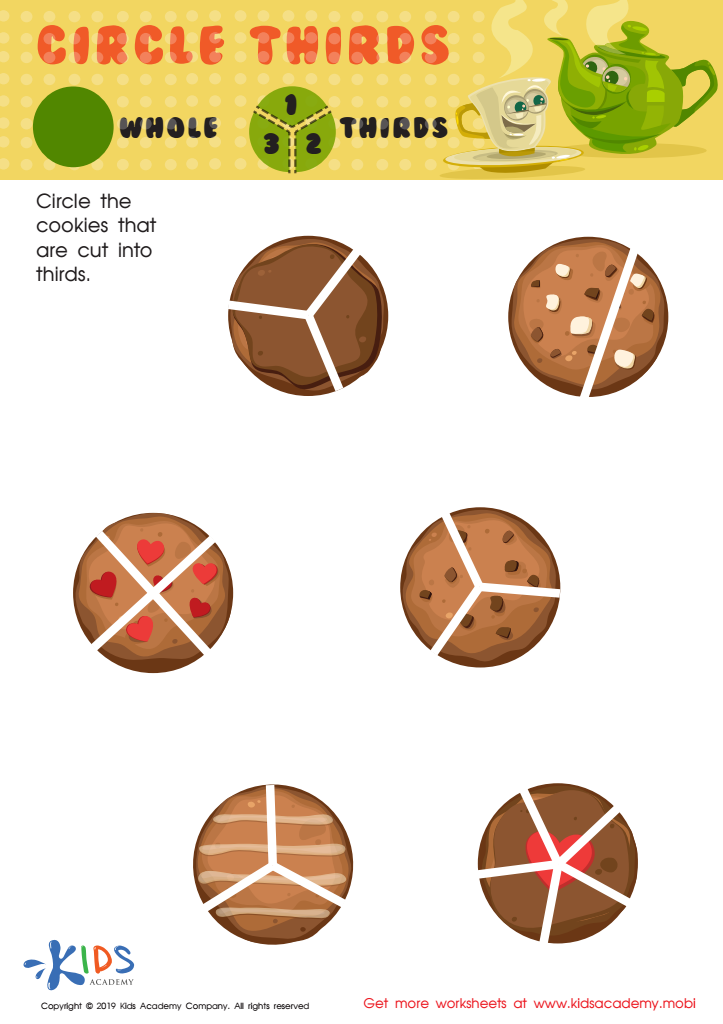

Circle Thirds Worksheet
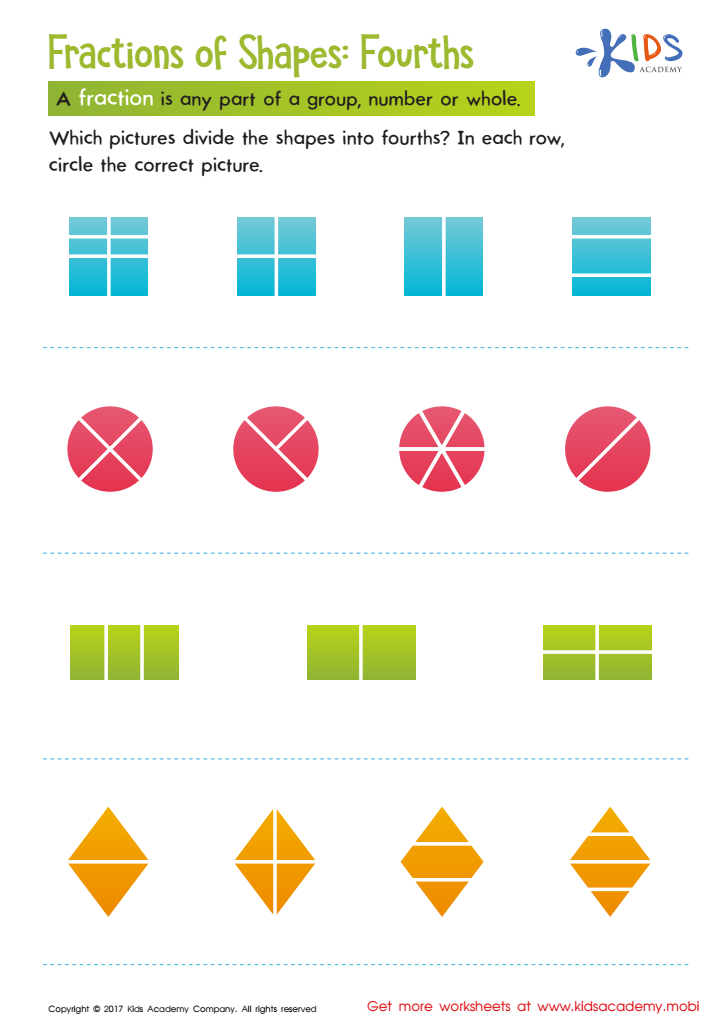

Fractions of Shapes Worksheet
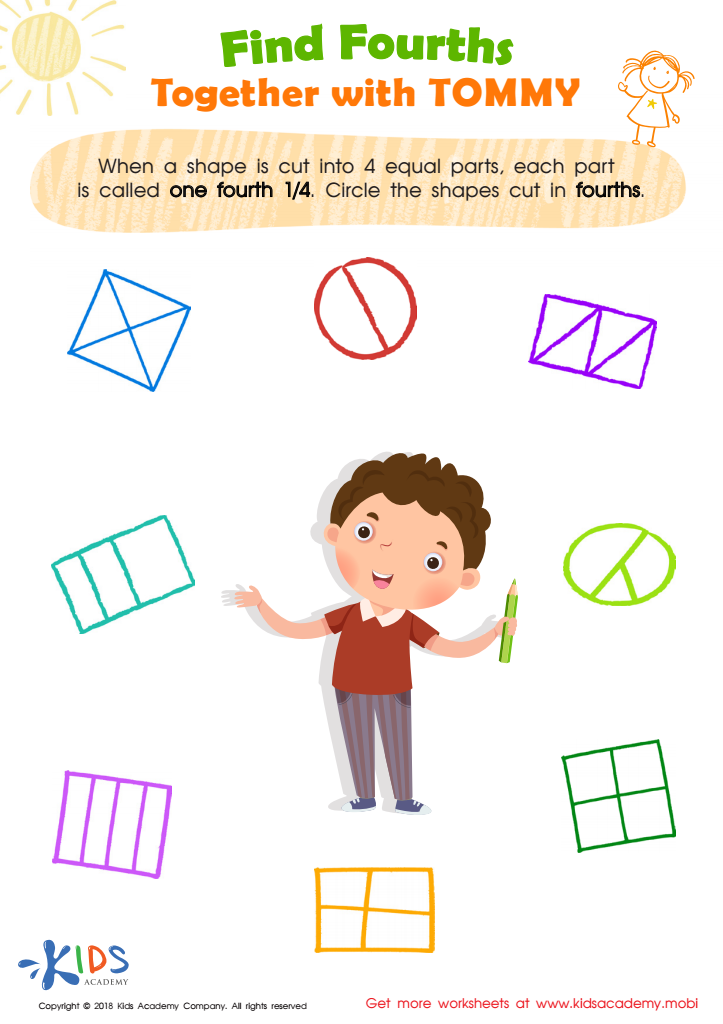

Find Fourths Together with Tommy Worksheet
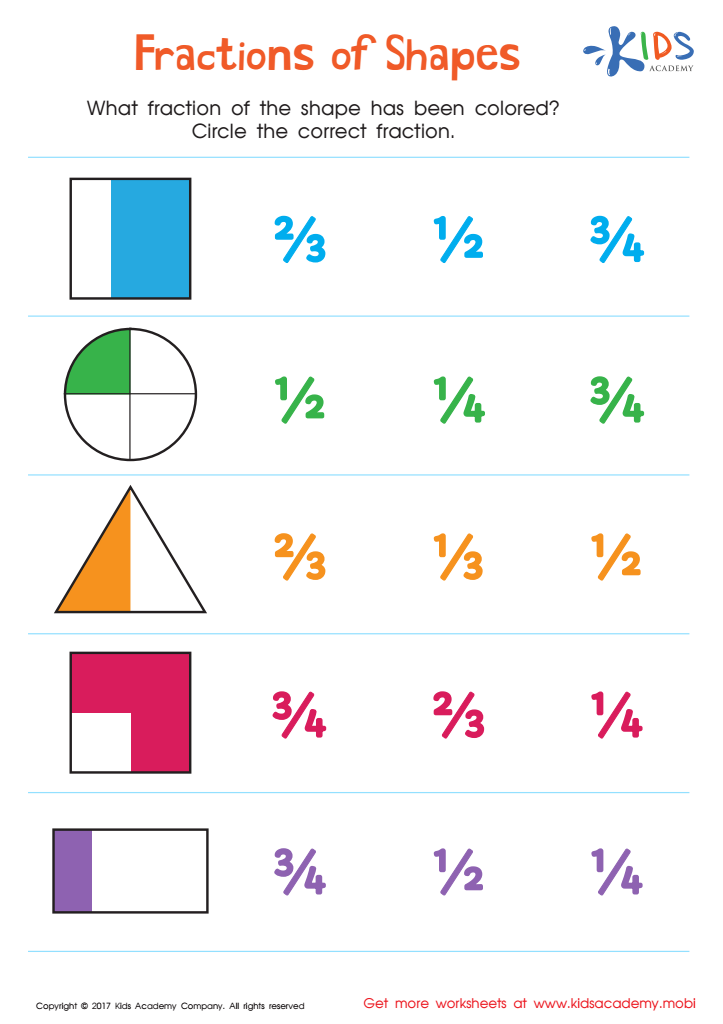

Fractions of Shapes: Math Concept Worksheet
Understanding fractions and geometry at ages 8-9 sets a crucial foundation for a child's academic progress and cognitive development. At this stage, kids' minds are highly receptive to conceptual learning, which is why introducing fractions and geometry is essential.
Firstly, fractions give children an intuitive grasp of parts and wholes, strengthening their comprehension of division and enabling them to understand more complex mathematical concepts in later years. When they see how fractions operate, like how 1/2 and 2/4 are equivalent, they develop problem-solving skills and logical reasoning.
Geometry, on the other hand, nurtures spatial awareness and visual cognition. Recognizing shapes, understanding symmetry, and exploring spatial relationships enhance a child's ability to navigate and interpret the world around them. For instance, identifying shapes and their properties helps in recognizing patterns, which is a skill used in reading, solving puzzles, and even coding.
Moreover, both subjects encourage hands-on learning through activities like cutting pizzas into slices (fractions) or identifying shapes in their environment (geometry). This kinesthetic learning approach makes abstract concepts tangible.
In essence, by grasping fractions and geometry early, children build a versatile mathematical toolkit. This fuels their academic curiosity, empowers their learning journey, and equips them with skills crucial for everyday problem-solving.
 Assign to My Students
Assign to My Students





























